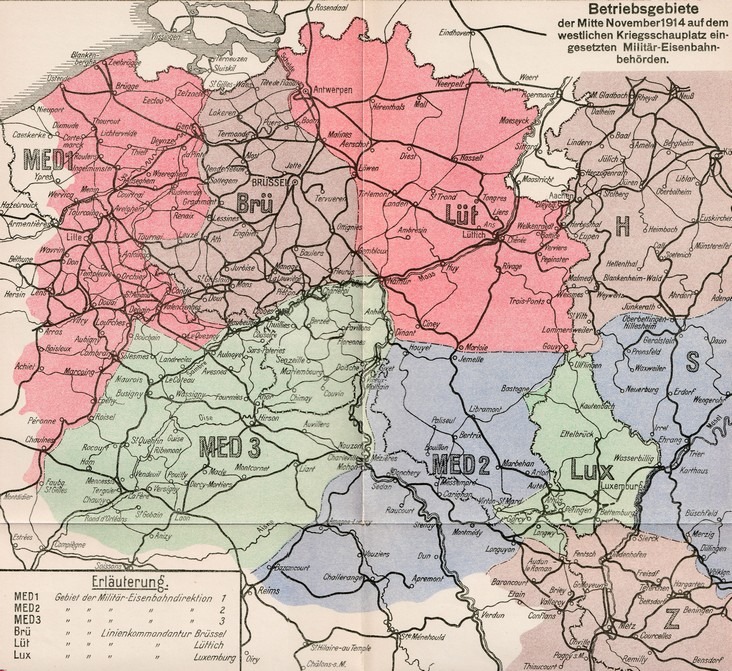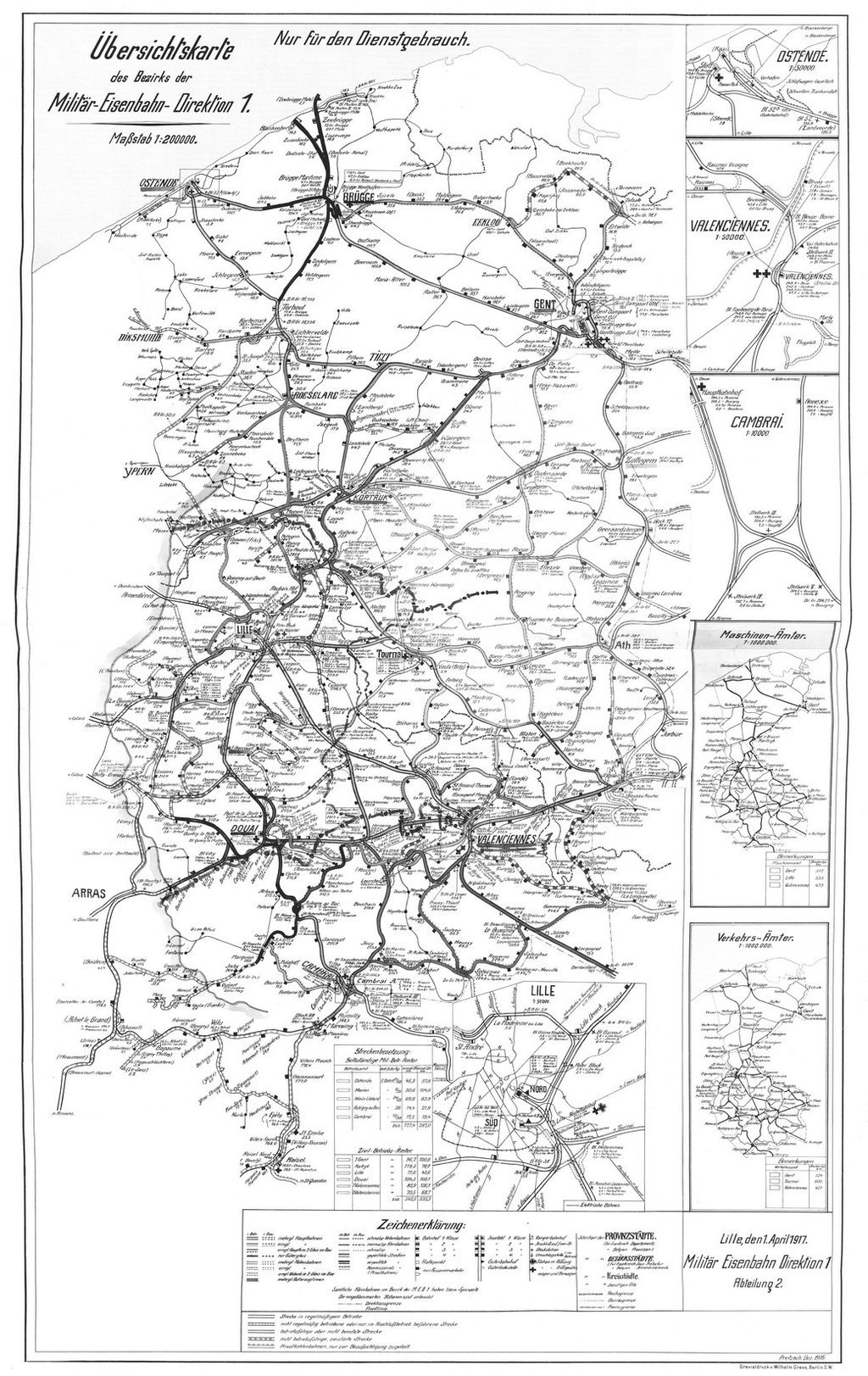Militär-Eisenbahndirektion 1
During the First World War, the railways played a crucial role in the swift deployment of troops, the transportation of equipment and munitions, and the repatriation of the wounded. In the occupied territories, the Germans established 11 Military Railway Directorates (Militär-Eisenbahndirektionen, or MED):
Map of the various Militär-Eisenbahndirektionen on the Western Front in November 1914. Source: Das deutsche Feldeisenbahnwesen 1 Reichsarchiv 1928. Click to enlarge.
MED 1 relocated to Aix-la-Chapelle on 13 August 1914, then to Brussels on 2 September, and finally to Lille from 26 October 1914 until mid-October 1918.
Map of the MED 1 sector on 1st April 1917. Click to enlarge.
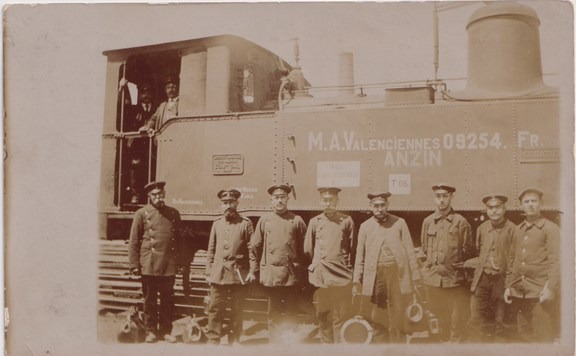

Photograph of German railwaymen in front of a locomotive at Valenciennes station in 1915.
To operate the trains, construct or maintain the tracks, run the maintenance workshops, and manage rail traffic, MED 1, like the other MEDs, employed several thousand individuals, including German soldiers, civilians, prisoners of war, and civilian labourers. By 1918, an estimated 44,200 people were employed by the military railways in the occupied territories[1].
A MED was organised into several departments (Abteilungen):
1914-1915:
Direktion (Directorate)
Abteilung 1: Transportwesen (Transport Department)
Abteilung 2: Bau und Betrieb (Construction and Operations)
Abetilung 3: Maschinen- und Werktstättenwesen (Machines and Workshops)
Abteilung 4: Telegraphenwesen (Telegraph)
Abteilung 5: Verkehrswesen und Hauptkasse (Traffic and main accounts)
Abteilung 6: Feldintendantur mit Feldmagazinpersonal und Kriegskasse (Quartermaster's Office with Field Depot Staff and War Treasury).
1916-1917:
Stab (General Staff
Abteilung 1: Transportwesen (Transport Service)
Abteilung 2: Betrieb und Bahnunterhaltung (Track operation and maintenance)
Abteilung 3: Maschinen- und Werktstättenwesen (Machines and Workshops)
Abteilung 4: Telegraph- und Stellwerkswesen (Telegraph and signal boxes)
Abteilung 5: Verkehr-, Rechnungs- und Kassenwesen (Traffic, accounting, and treasury)
Abteilung 6: Feldintendantur, Magazinverwaltung und Kriegskasse (Quartermaster's Office, Warehouse Administration and War Treasury)
Abteilung 7: Gesundheitsdienst (Health Service)
Abteilung 8: Einsenbahnbau, Feldbahnwesen (Construction, country railways)
Abteilung 9: Landwirtschaft (Agriculture)
As these personnel could not always access a nearby military post office, the MED established sorting centres (Verteilungsstellen) responsible for directing mail from Germany to MED personnel and dispatching correspondence back to Germany. These sorting centres were located in the headquarters towns of each MED.
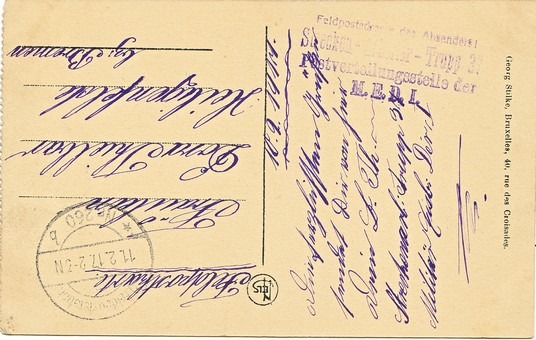

Card written by a soldier assigned to the 37th section of tracklayers and processed by Feldpoststation 260 in CAMBRAI. Troops involved in building or maintaining the railways moved around a lot, so their postal addresses changed with them. To facilitate the routing of mail coming from Germany to these units, the mail was sent directly to the sorting centre (Verteilungsstelle) of the MED, which was responsible for finding the addressee. In the case of this card, the reference to the Verteilungsstelle of MED 1 is made directly in the unit stamp.
These sorting centres were not managed by the Feldpost, although there were plans for them to be. However, it is likely that the Verteilungsstelle at MED 1 in Lille effectively became a military post office in its own right, as in 1917, it acquired a Feldpost date stamp inscribed with the words "Deutsche Feldpost m". To date, this is the only known sorting office to have used this specific type of date stamp.
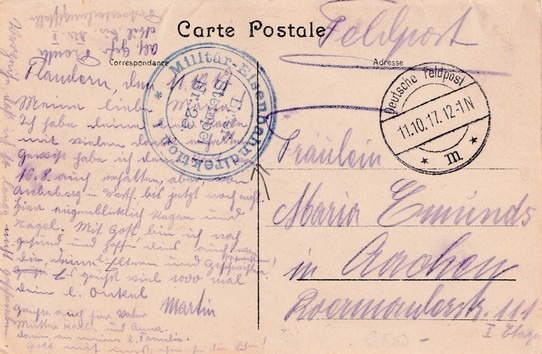

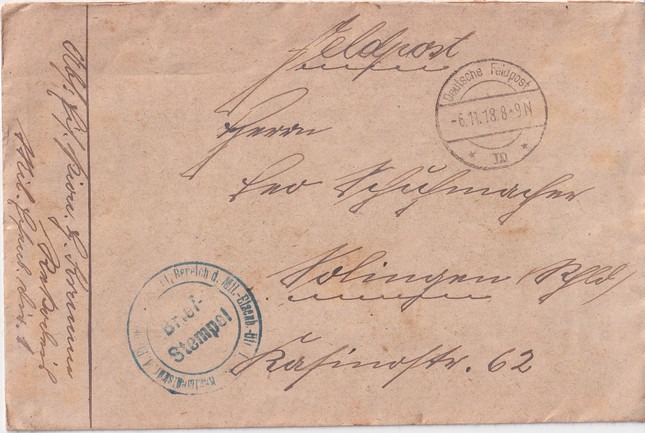

Card processed by the Verteilungsstelle of MED 1 on 11 October 1917. Deutsche Feldpost m" date stamp.
Letter sent on 6 November 1918 by a sapper assigned to the service of the MED 1 and processed by the Verteilungsstelle of this Militär-Eisenbahndirektion, postmarked "Deutsche Feldpost m".
At this date, MED 1 was no longer in LILLE, which had been liberated on 17 October 1918.
Mail was deposited locally at various MED services, which handled correspondence from both MED personnel and other military personnel using the trains, including deployed troops and soldiers on leave. Mail submitted at these services was stamped with an official mark (Dienststempel or Briefstempel).
In most MEDs, these service stamps included the name of the service and often its location.
However, from January 1915, MED 1 adopted a markedly different system for identifying its services. Its service stamps were standardised and anonymised, displaying only the words "Militär-Eisenbahndirektion Brief-Stempel", sometimes accompanied by a number.
These stamps typically measured approximately 35 mm in diameter.
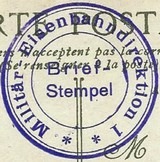

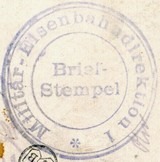

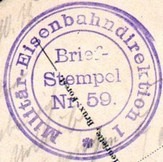

Stamp with 2 stars without number
Stamp with 1 star without number
Stamp with number
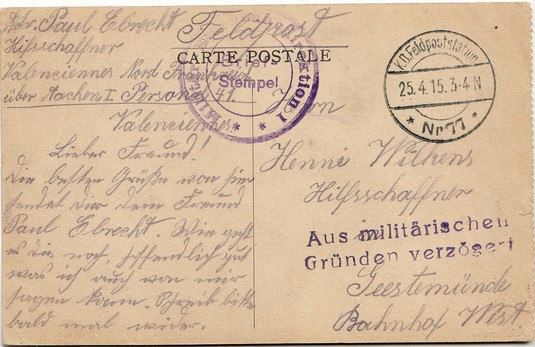

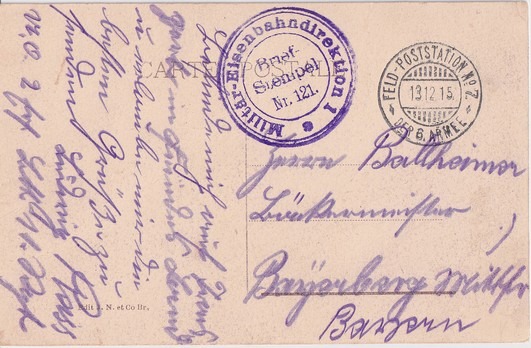

Card of an auxiliary railway clerk (Hilfsschaffner) deposited at the Feldpoststation n° 77 of VALENCIENNES. The MED service stamp is completely dumb. This card was delayed for military reasons (Aus Militärischen Gründen verzögert).
Card of a soldier of the 11th Bavarian Infantry Regiment being transferred. The card was handed over to a MED 1 service and picked up by Bavarian Feldpoststation no. 7. This post office was close to VALENCIENNES station. The post office to which the service stamp belonged is not known, but it is known to have been located in VALENCIENNES.
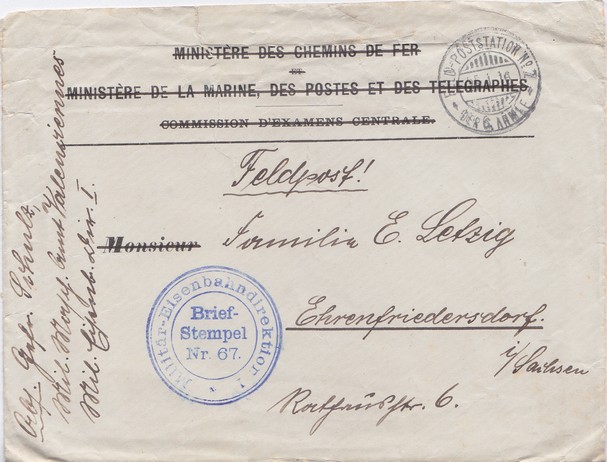

Letter written by a member of the machinery office (Militär-Maschinenamt) in VALENCIENNES. This department was number 67 in the nomenclature of MED 1 services and was responsible for managing the locomotive fleet in its sector.
Unfortunately, we do not know the nomenclature of the MED 1 services.
Sources:
[1] Der Weltkampf um Ehre und Recht, tome 6 Die Organisationen der Kriegführung. 1933.

